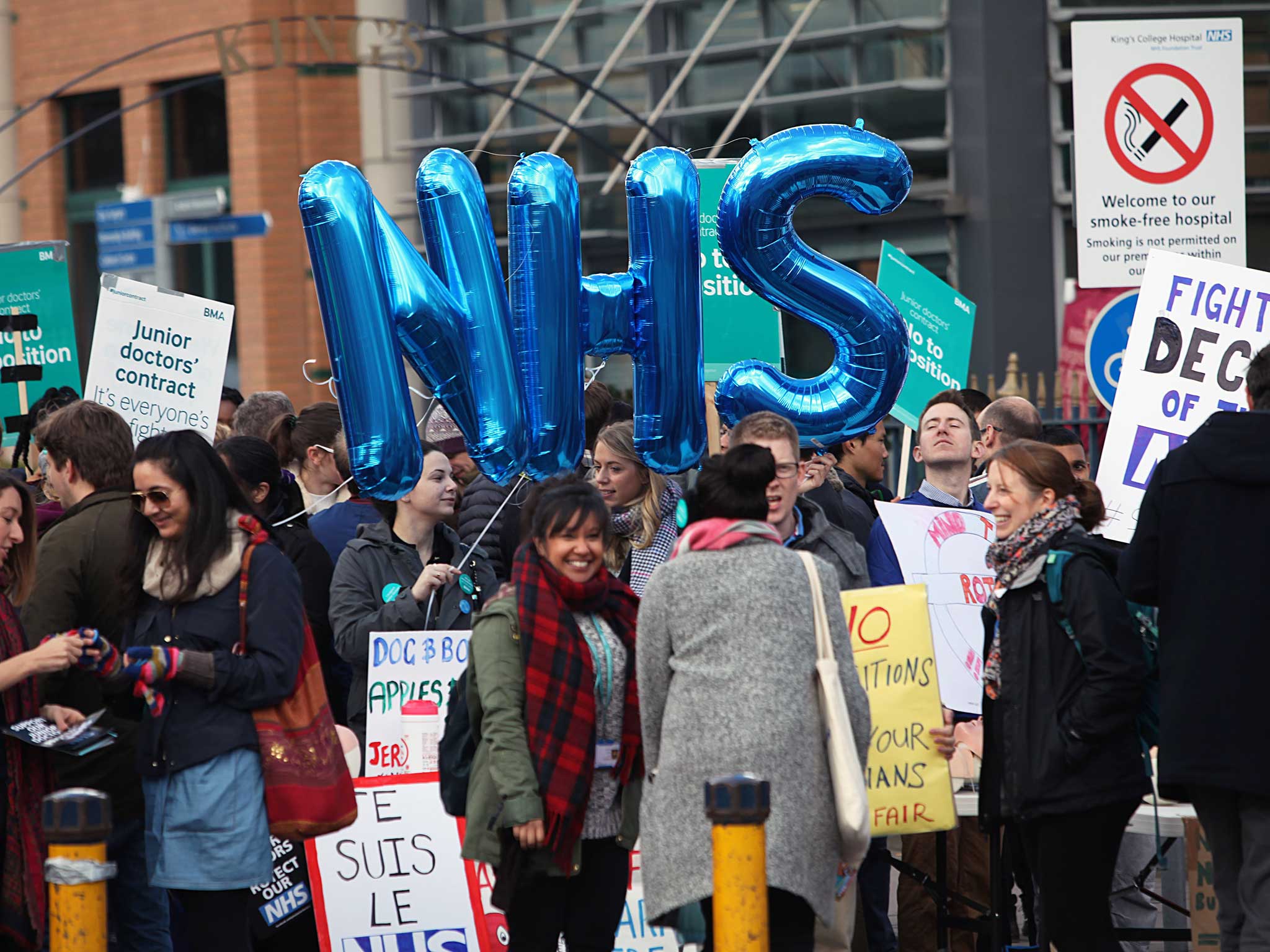No matter what Jeremy Hunt does, the statistics show that we will always trust a doctor over a government minister
When asked whose fault the protracted dispute is, 54 per cent still squarely blame the government and only 8 per cent the doctors, despite the stoppage of routine and emergency services

Your support helps us to tell the story
From reproductive rights to climate change to Big Tech, The Independent is on the ground when the story is developing. Whether it's investigating the financials of Elon Musk's pro-Trump PAC or producing our latest documentary, 'The A Word', which shines a light on the American women fighting for reproductive rights, we know how important it is to parse out the facts from the messaging.
At such a critical moment in US history, we need reporters on the ground. Your donation allows us to keep sending journalists to speak to both sides of the story.
The Independent is trusted by Americans across the entire political spectrum. And unlike many other quality news outlets, we choose not to lock Americans out of our reporting and analysis with paywalls. We believe quality journalism should be available to everyone, paid for by those who can afford it.
Your support makes all the difference.For the first time in 70 years, doctors are on an all-out strike. They have been the most trusted profession in the UK ever since we started ranking professions by their veracity in the 1980s. In contrast fewer than one in four people trust Cabinet Ministers to tell the truth. The Department of Health and Secretary of State, Jeremy Hunt, were always going to have a tough fight on their hands.
Since January 2016 we have measured public support for the doctors versus the government: until April around two –thirds of the public have said they support the doctors. By keeping Accident and Emergency cover, support stayed at 65 per cent in previous strikes. Now they have withdrawn emergency cover, support has fallen to 57 per cent, but is still more than double the 25 per cent opposed to today’s strike.
When asked whose fault the protracted dispute is, 54 per cent still squarely blame the government and only 8 per cent the doctors, although as the dispute has dragged on, the proportion blaming both sides for bloody-mindedness has risen from 18 per cent to 35 per cent.
The public knows little about what conditions doctors currently work to, or what the government’s proposed contract is – they just instinctively side with doctors. They tend to think the dispute is as much about hours of work and implications for safety of patients (64 per cent), rather than simply pay (60 per cent), In depth analysis shows that a seven day a week service is not the be all and end all for the public.
So far today, no stories of deaths resulting from the removal of junior doctors from Emergency or Maternity services have muddied the waters. The overall position is remarkably similar to the firefighters’ strike of a decade or so ago. In October 2002 almost two thirds of people in Britain supported the fire strike as long as the fire crews still responded to “major” emergency calls.
Both the middle classes (61 per cent) and the working class (53 per cent) say they support junior doctors this week. Yet it is noticeable that support is now lower amongst older people than the young: older people are both likely to be the heaviest users of the NHS, and more conservative leaning. If doctors choose an indefinite stoppage, then support may decline further.
But at present in Britain less than one person in a hundred cites strikes or industrial action as a key challenge facing the country, whereas back in the 1970s, the equivalent figure was 73 per cent: it was the number one issue. How the next 24 hours play out in terms of real impact on the frontline will be crucial; if nothing catches the public’s attention, their sympathies will likely stay with the junior doctors.
Join our commenting forum
Join thought-provoking conversations, follow other Independent readers and see their replies
Comments